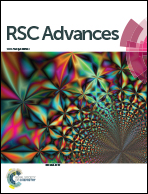Trace metal profiles in mosses and lichens from the high-altitude Tibetan Plateau
Abstract
The high-altitude Tibetan Plateau plays a significant role in the distribution and transport of contaminants, but there are limited studies on the levels, patterns and distributions of trace metals in this typical region. In this work, the accumulation and distribution profiles of trace metals in mosses and lichens collected from the Tibetan Plateau were particularly focused on because they are geographically widespread plants and absorb most nutrients from the atmosphere. The results showed that the concentrations of Cr, Mn, Co, Ni, Cu, As and Pb in mosses were significantly higher than those in lichens collected from the same sites, indicating that mosses and lichens from the Tibetan Plateau had different abilities for accumulating these metals. Significantly positive correlations were found among the concentrations of trace metals (such as Cr–Co–Ni and Cu–As–Pb, p < 0.05) in both mosses and lichens. The spatial distribution of most determined metals in mosses and lichens displayed a decreasing trend from south to north and from west to east. The contents of Mn, Co, Ni, Cu, As, Cd and Pb in mosses increased with the ascending altitudes of the sampling sites, implying the influence and mountain trapping of the Tibetan Plateau on these trace metals.


 Please wait while we load your content...
Please wait while we load your content...